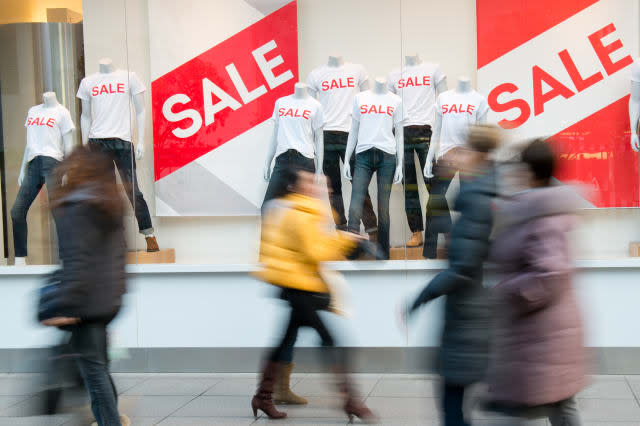How to buy anything for less: when is the cheapest time of year?

The stores don't really want you to know when the sales are on their way, and when you can get the biggest bargains at the cheapest price. Otherwise, if they told you that June was the cheapest time to buy a laptop, then how would they get you to buy any of them at full price in May?
It means they're unlikely to tell you the best time to buy anything from furniture to toys and TVs. Fortunately, we don't need them to come clean, because the deal-hunters have been keeping track, and now they have crunched the numbers to produce a list of the best time to buy a huge range of items.
The calendar
According to credit card company Marbles.com, right now is the time to be on a hunt for a TV, when we can see discounts reach 40% or more. The rest of its sales calendar is:
July: TVs have up to 40% off
August: smartphones, which can be as much as 50% cheaper.
September: kitchen appliances, with savings of up to a third off.
October: summer goods. Everything from BBQs to mowers have up to 40% off.
November: health and beauty, with savings ranging from 30%-60%.
December: cars - where you could save as much as 32%.
January: furniture and toys, when you could save 54% off a double bed, and 30% off a sofa. You could also save 43% off kids' books and 63% of a Nintendo Wii.
February: white goods. You can save between 20% and 30% on everything from a washing machine to a fridge freezer.
March: jewellery, with up to two thirds off some items, and a quarter off diamond rings.
April: DIY equipment, including 45% off drills, and 47% off electric saws
June: Laptops, with up to 50% off
The stores run these sales to boost demand in slow periods. So, for example, in July people tend to be out in the evening rather than at home watching TV, so buying a new one doesn't seem like a priority. Likewise, when the weather turns in October, nobody is snapping up garden furniture and BBQs, so they are reduced in order to shift leftover stock.
If an item you are looking for isn't on this list, it's worth considering when they are likely to be least popular, and when retailers will be trying to boost demand.
How to use the calendar
It's a brilliant starting point, but if you want to make the most of the calendar, you shouldn't just hang on for the right month and get stuck in; there are three other things to consider first.
The first step is to decide what you actually want. The risk with a sale is that you are seduced by something that's not quite right, and end up spending more than you intended to.
The second is to work out when you can afford to buy it. There's no point borrowing money in order to buy something at a knock-down price if you end up spending far more than you saved in interest payments on your credit card.
And finally, do your research. The difficulty with sales is that you see the big red stickers, and believe the hype. Once you know what you are looking for, you should shop around for the best possible price. You should also talk to salespeople about whether they are willing to do a deal - especially with a large purchase like a car. This will give you a sensible comparison price.
Once you have this, when the sales roll around, you can check the discounted price against the comparison price - to be sure you really are making the savings you think.





